Entrepreneur becomes pharmaceutical giant. Fund at The Trust supports scientific research.
George W. Merck (1894-1957)
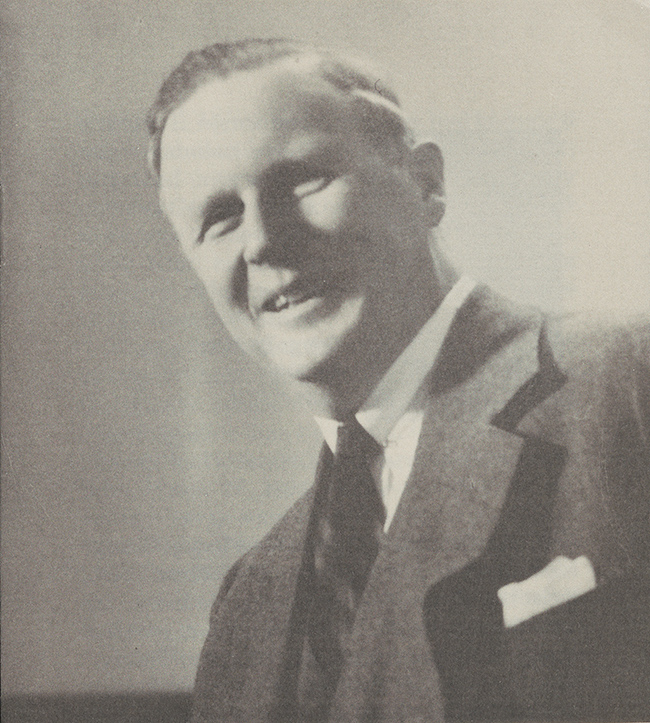
As a boy in Llewellyn Park, New Jersey, George Merck would slip in and out of Thomas Alva Edison’s laboratory accompanied by the inventor’s two sons. The elder Edison, who had wryly christened the gangly youngster “Shorty,” shared a principle that would become crucial to George’s future revolutionizing of pharmaceutical research.
“Start a reasonable investigation of some kind, and make lots of experiments,” Edison told George. “You may not reach the goal you are seeking, but if you use common sense and keep your eyes open, you create your own opportunities for making worthwhile discoveries along the way.
“If you just wait for inspiration, and are afraid to experiment, you’ll never learn anything,” Edison said.
Heir to three centuries of chemists and pharmacists, George Wilhelm Merck blended business sense and compassion with ingenuity, integrity, and enthusiasm. From this fusion came a business leader who honored public service, a scientist who placed people before profits, and a conservationist who bought land for common enjoyment.
George Merck’s family and business roots stretched back to an apothecary shop founded in 1668 in Darmstadt, Germany. By the late 19th century, E. Merck and Co. had become a major manufacturer of medicinal compounds. It expanded overseas to America in 1891, when George Merck left Germany to oversee the new offices at 62 Wall St. in New York City. Two years later, he married Friedrike Schenck of Antwerp, Belgium, and settled into a new home at 334 W. 86th Street.
George and Friedrike named their first child George Wilhelm Herman Emanuel Merck, after the infant’s uncles. (Years later, he would tell Time magazine that, by tradition, each uncle so honored had to send silver presents for 10 years.) Born March 29, 1894, in New York City, the young George soon moved with his parents to West Orange, New Jersey, and the rolling hills of Llewellyn Park. The company offices in Manhattan moved two years later to a newly built Merck Building at Eighth Street and University Place.
With its fine residences dotting 700 wooded acres, Llewellyn Park was home in the early 1900s to many of the people directing the industrial growth of America. For the young George Merck, it afforded a comfortable, disciplined life, including a proper education at the Dearborn-Morgan School and later the Newark Academy and Morristown School. He was the only son among four sisters: Elsbeth, Lynn, Olga, and Magda.
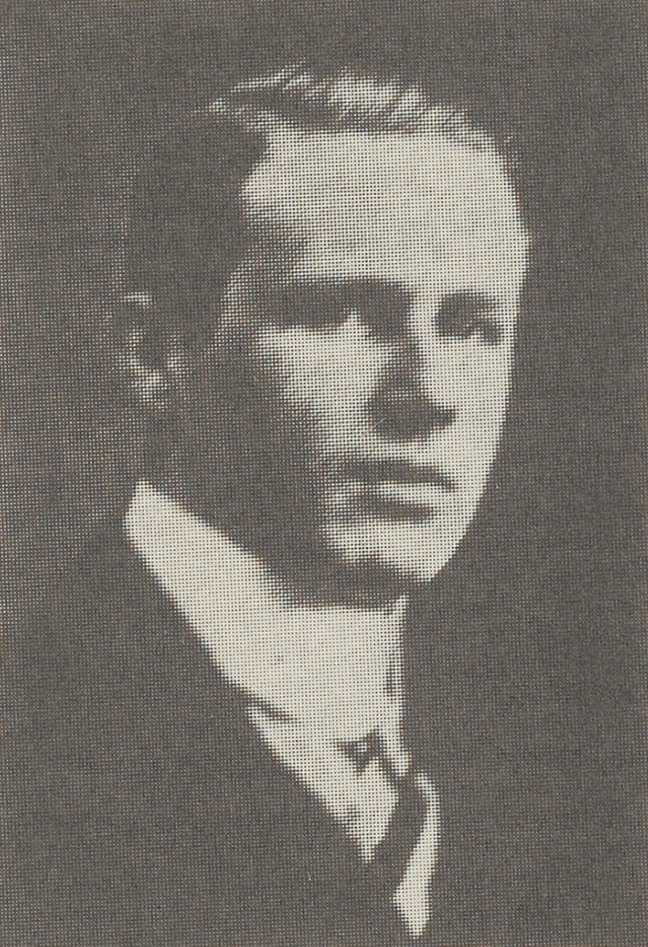
George entered Harvard with the class of 1915, but finished his bachelor’s degree in chemistry a year ahead of his classmates. He found time, too, to edit the Harvard Lampoon, as well as join the Western Club, Stylus Club, Institute of 1770, Signet Society, and Deutscher Verein, the German club at Harvard.
His three years at Harvard turned out to be the end of George’s formal education when impending war interrupted his plans to pursue a doctorate in Germany. His father suggested he join the family business instead, saying, “Come on into the shop. The war will be over in a few months, and then you can go and get your degree.” Recalling this many years later, George said, “I never did, and I’m still in the shop.”
Merck and Co. Inc., which had separated from its German antecedents, was by then headquartered on 150 acres in Rahway, New Jersey. As befitted the company’s heir apparent, George acquired experience in practically every department and operation. Named vice president in 1918, he became president when his father’s health failed in 1925. The elder Merck died a year later. In 1927, the company merged with the Powers-Weightman-Rosengarten Co., pharmaceutical producers from Philadelphia, and George continued as president of the consolidated Merck and Co.
In 1929, he made a decision that marked the beginning of a new era in industrial research: to establish a laboratory in which Merck scientists could conduct both pure and applied research of a caliber equal to that of the best universities in the world. “We have faith that in this new laboratory,” he said at the dedication four years later, “science will be advanced, knowledge increased, and human life will win a greater freedom from suffering and disease.”
He also urged his colleagues in the American Chemical Society to invest in research. Addressing its Division of Medicinal Chemistry in April 1935, George Merck argued for a stronger partnership between the chemical industry and medicine:
“In the end, our success in fighting the battle against disease and suffering will be measured by the net addition we make to the sum of life-saving knowledge for the benefit of all mankind, and it is in the attainment of the utmost and speediest advances toward this end that industry and the medical profession will find themselves so essential to each other.”
With the new laboratories, Merck created a campus atmosphere to lure academic scientists who had heretofore scorned industrial research. Merck’s interdisciplinary approach offered scientists, he said, “the greatest possible latitude and scope in pursuing their investigations, the utmost freedom to follow leads promising scientific results, no matter how unrelated to what one would call practical terms,” and freedom to publish.
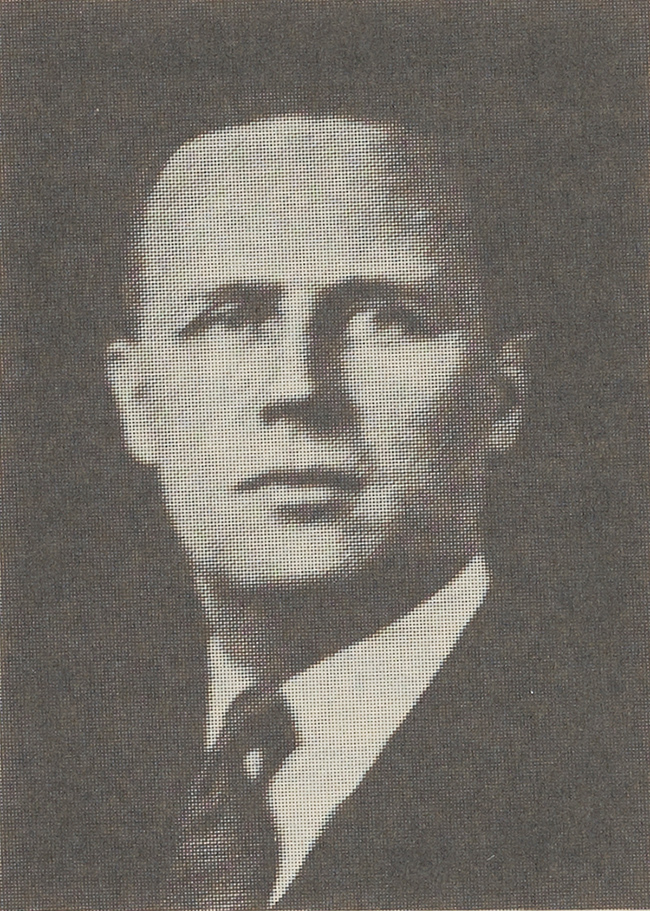
The approach worked. By 1940, Merck scientists had first synthesized, either alone or in collaboration with others, vitamins B₁, E, B, and pantothenic acid. The company began large-scale production of almost all the vitamins needed in human nutrition and was an early manufacturer of sulfa drugs. By 1952, when Time magazine ran George Merck’s picture on its cover, Merck and Co. had become the nation’s second-largest pharmaceutical supplier, credited with the development of streptomycin, synthesis of cortisone, and isolation of the anti-anemia vitamin B12.
The man responsible for much of this success was often described as “towering” above his peers, not just for his height of 6-foot-5 or his achievements, but for his ebullience, his character, and his singular lack of affectedness.
“He was a tycoon,” wrote his son-in-law Frederick Buechner. “But unlike most tycoons, he was never cut off, hemmed in, by it all. New York taxi drivers and Vermont farmers, Nobel Prize-winning scientists and footloose German cousins—there was nobody who didn’t interest him.”
George had boundless energy and joked that he “spent half his time in the New York office, half his time in Rahway, and half his time at home.” His second wife, the former Serena Stevens of Summit, New Jersey, presided over Eagle Ridge, the family’s 120-acre estate just outside Llewellyn Park in West Orange, as well as Wind Gap Farm in Rupert, Vermont, and a home in Hobe Sound, Florida. There were five children: sons George and Albert from a 1917 marriage to Josephine Carey Wall of Llewellyn Park, and three from his marriage to Serena in 1926: Serena (called Bambi), John, and Judith.
The Mercks bought Wind Gap Farm in 1941 as a weekend retreat, a place to unwind from the daily pressures of running Merck and Co. George applied his meticulous nature to the search for a summer home by pulling out a map, inserting the point of a compass on Albany (to which he traveled by train), and swinging an arc to the farthest distance he felt he could comfortably reach from there. His secretary, Elizabeth Kelley, had the map with her one weekend when she and her sister happened to stop in Rupert. It was just over the line, but when she called George to describe the “wonderful piece of farmland with the beautiful view,” he was enthused.
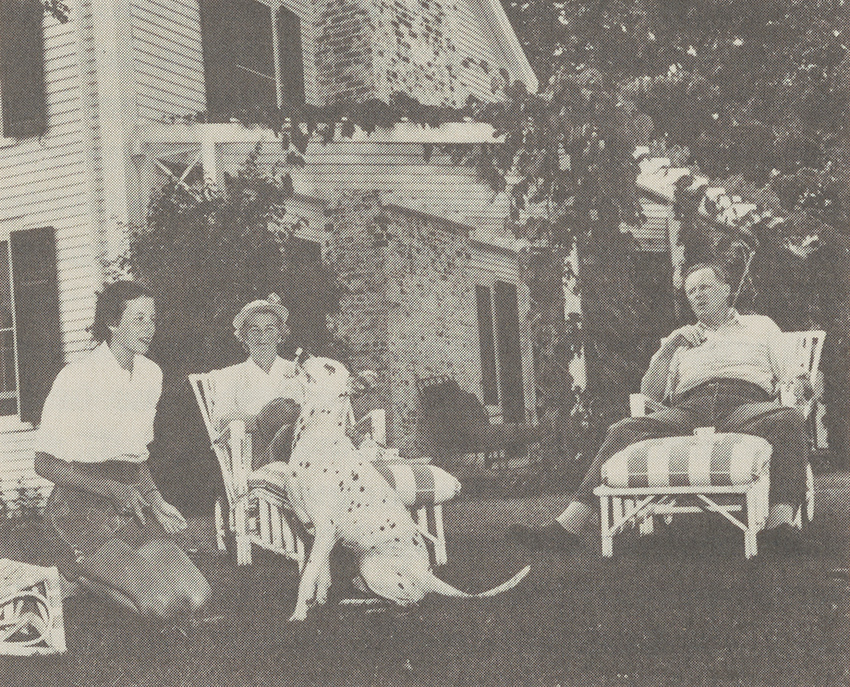
George took pains to ensure that each home suited its immediate surroundings and location. The Florida house was Art Deco, while the restored farmhouse in Vermont had a pool fed by icy springs from an adjacent hillside. The horses he bought for his daughters were Morgans, a popular breed in New England.
More importantly for the public, George Merck decided to put his love of forestry to work in Vermont, doing something that would fit in and serve a useful purpose. He had been a student of Dr. Carl Alwin Schenck, a forestry expert and a cousin of his mother’s, who founded the Biltmore Forestry School in North Carolina. When George foresaw the need for a great expanse of open land, available for hunting, hiking, and camping, he began looking for property he could rescue from years of neglect and restore.
In all, George purchased 2,600 acres that, except in times of fire danger, were always open to the public. Overseeing the land was the Vermont Forest and Farmland Foundation, which George established in the late 1940s. To provide public input, George arranged for appointees of the governor and the town selectmen to sit on the board of trustees.
During these years, George’s time at Wind Gap was limited by the outbreak of World War II. A great believer in public service, he already had served on the Munition Board’s Chemical Advisory Committee. In 1942, President Theodore Roosevelt made him director of the War Research Service, a civilian agency charged with all biological warfare research and development. Its assignment was to design defenses and methods for retaliating against possible enemy attacks from germ-laden missiles.
Despite his preoccupation with the larger problems of Washington and the country, George found time to open his home to people whose lives had been torn apart by the war. After the London Blitz, he called friends there to see if any wanted to send their children to the United States for the duration of the war. The he called New Jersey friends to see who would be willing to take them in. The Mercks themselves housed two children. “This was my father,” said his daughter Judith Buechner. “He was very involved, very interested in people.”
Merck and Co. made its own substantial contribution to the war effort. After the bombing of Pearl Harbor, Japanese troops rapidly occupied what was then the Dutch East Indies, thus controlling an area that produced most of the world’s cinchona bark from which malaria-fighting quinine is extracted. But anticipating a danger not yet fully appreciated by the War Department, Merck and Co. had moved its huge stores of the bark from Java and Sumatra to America, where much of it was turned over directly to the government. The company also had established plantations in Guatemala after World War I, and the cinchona trees there could be used as a source of quinine.
In 1944, the work of the War Research Service was absorbed by the Chemical Warfare Service of the War Department. George Merck continued as special consultant to the secretary of war and became chairman of the Biological Warfare Committee. Later, his lifelong friend author John Marquand recalled George’s extensive involvement:
“It will be clear to those of you who knew wartime Washington that Mr. Merck’s responsibilities were large and undefined as well as being cloaked by a secrecy that impeded logical action…. It was his duty to start dozens of scientific projects and to draw into them personnel from the Army, Navy, and elsewhere. It would be difficult to exaggerate the innumerable complications, competitions, and heart-burnings, the placating and balancing of personalities that were all direct results of these duties.”
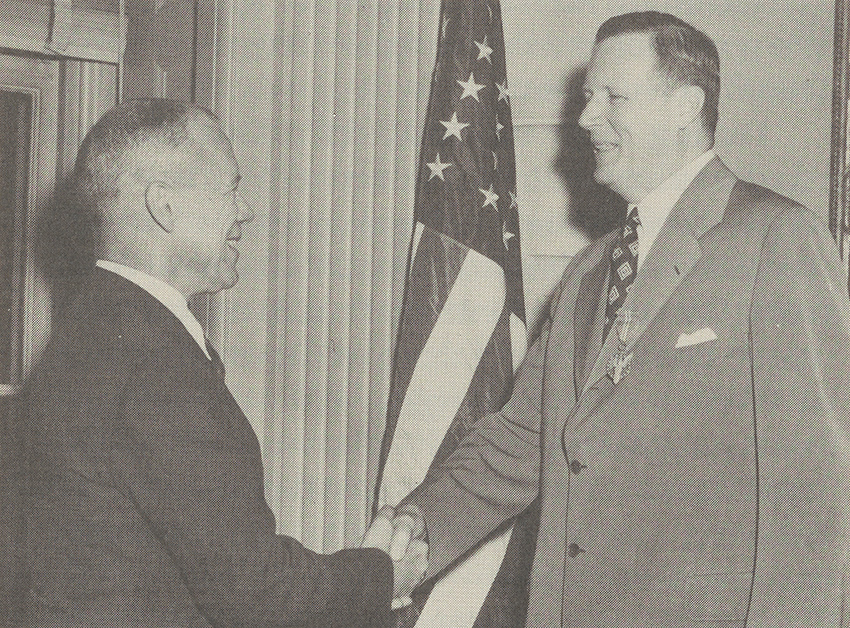
For his efforts, George earned the Medal of Merit. His experiences led him to warn policymakers and the public that biological warfare posed even graver threats to humanity than the atomic bomb.
As George Merck’s reputation as an eminent business and scientific leader grew, his advice was widely sought. He served on the National Research Council Committee on Drugs and Medical Supplies from 1942 to 1945. Presidents Harry Truman and Dwight Eisenhower appointed him to the board of the National Science Foundation in 1951 and 1954, respectively. He became a director of the National Industrial Conference Board. And from 1949 to 1952, George served as president of the Manufacturing Chemists’ Association.
He enjoyed diverse political and charitable interests. At various times he was a director of the American Cancer Society, American Forestry Association, American Foundation for Tropical Medicine, National Conference of Christians and Jews, and the Save the Redwood League. He also was an early Eisenhower backer, a state treasurer of the New Jersey GOP, and a member of the West Orange Zoning Board.
Colleges vied to honor him. “His closet was ablaze with the hoods of his honorary doctorates,” wrote son-in-law Buechner. They included the colors of nearby Rutgers University, Stevens Institute of Technology, and Newark College of Engineering, as well as the University of Vermont, Temple University, Middlebury College, Philadelphia College of Pharmacy, and Lafayette College.
The American Section of the Society of Chemical Industry presented George Merck with its Industry Medal in November 1947. In his address to the gathering, John Marquand offered a witty and insightful glimpse of his friend:
“Since he has so few [faults], let us catalog the faults that he lacks or that he has been able to control. I have never known him to lose his temper, and I have seen him in times of the utmost provocation…. This quality of Merck restraint, which endured without a single break through the war years, explains why a harassed assistant to the secretary of war once said that George Merck had the most Christ-like disposition of anyone he knew and why his wife says he is like Abraham Lincoln. It explains, too, why he left Washington with hundreds of friends and an absolute minimum of enemies.”
George used his acceptance speech to continue the crusade for industrial research:
“Managers of industry must provide encouragement, a feeling of security and inspiration. A unique appeal to the chemical industry lies in the urgent demands of competition—the intensity of effort that keeps the individual working at top constructive pace … The essence of scientific endeavor remains achievement.”
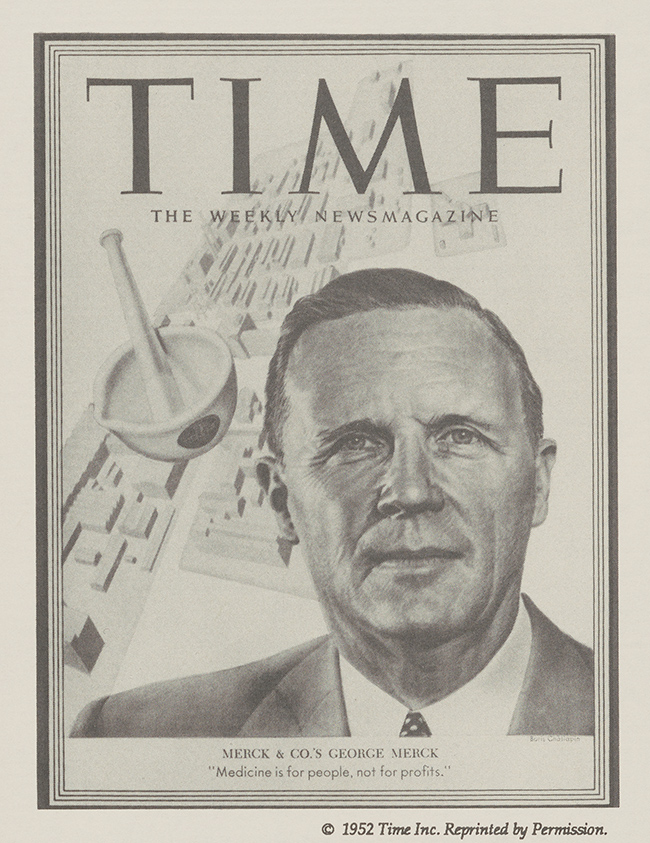
The prevailing opinion among those who knew George well was that he would want to be remembered as someone who had worked to make a better world. The Time magazine cover of Aug. 18, 1952, captioned George Merck’s portrait with his ultimate credo: “Medicine is for people, not for profits.” The line was drawn from a speech George gave at the Medical College of Virginia in December 1950:
“We try to remember that medicine is for the patient. We try never to forget that medicine is for the people. It is not for the profits. The profits follow, and if we have remembered that, they have never failed to appear. The better we have remembered it, the larger they have been.”
George Merck became chairman of the board of Merck and Co. in 1949, a position he held until his death on November 9, 1957, from a cerebral hemorrhage. He was 63.
Two years later, his beloved Wind Gap Farm—with its sugar grove that produced maple syrup enjoyed by so many, and its reforested acres of evergreens accessible by newly constructed miles of jeep roads— was renamed the Merck Forest in his honor.
In 1987, in accordance with the will of his wife, Serena, the George W. Merck Fund was created in The New York Community Trust. Its purpose recalls George’s admonition to “prepare the soil in which research can flourish.” The fund enables faculty in the Applied and Natural Science Department of Harvard’s Faculty of Arts and Sciences early in their academic career (preferably prior to the receipt of tenure) for a minimum of two years, to initiate research in new and imaginative directions potentially beneficial to humanity.